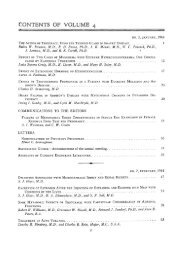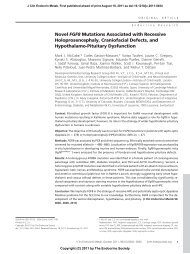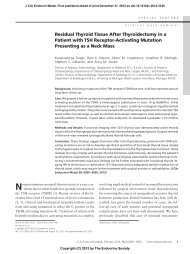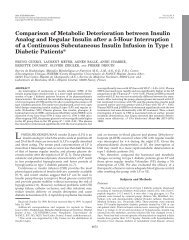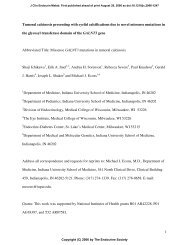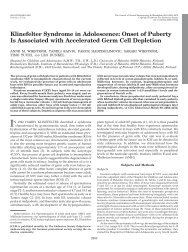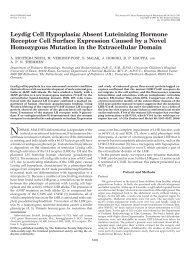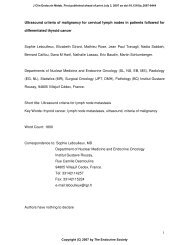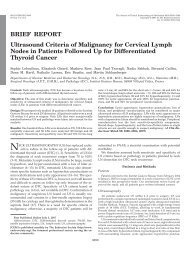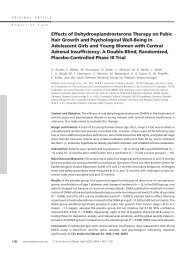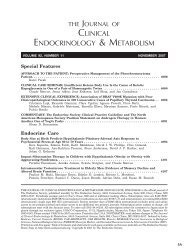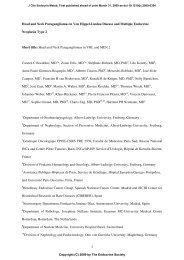Impaired glucose-induced glucagon suppression after partial ...
Impaired glucose-induced glucagon suppression after partial ...
Impaired glucose-induced glucagon suppression after partial ...
You also want an ePaper? Increase the reach of your titles
YUMPU automatically turns print PDFs into web optimized ePapers that Google loves.
A number of previous studies in rats and mice have suggested that functional alterations in<br />
islet secretion are only detectable <strong>after</strong> reductions in beta-cell mass in the range of ~80-90%<br />
(44, 45), whereas less extensive pancreatic resections can be tolerated without measurable<br />
disturbances in circulating islet hormone concentrations (46). These reports are contrasted by<br />
larger animal studies, where alterations in both insulin and <strong>glucagon</strong> secretion occurred<br />
already <strong>after</strong> an ~50% beta-cell loss (15, 17, 47). Furthermore, studies in individuals with<br />
impaired fasting <strong>glucose</strong>, who typically already exhibit defects in insulin secretion (48), have<br />
revealed an ~50% deficit in beta-cell mass even before the full onset of type 2 diabetes (49).<br />
The present studies showing marked alterations in both insulin and <strong>glucagon</strong> secretion <strong>after</strong><br />
hemipancreatectomy are therefore consistent with these previous studies and re-emphasize the<br />
importance of beta-cell mass for the maintenance of <strong>glucose</strong> homoeostasis.<br />
There has been some debate regarding the distribution of islet alpha- and beta-cells within<br />
the pancreas. Indeed, in different studies in humans and in animal models, the majority of<br />
alpha- and beta-cells were found in the pancreatic tail, whereas Pancreatic Polypeptide<br />
secreting cells were predominantly shown in the pancreatic head and the uncinate process (50-<br />
54). In the present studies fasting <strong>glucagon</strong> concentrations were almost unchanged <strong>after</strong><br />
pancreatic head resection, but substantially lowered <strong>after</strong> removal of the pancreatic tail. This<br />
may suggest a predominance of alpha-cells in the pancreatic tail compared to the head and<br />
body regions. However, since the maximum <strong>glucagon</strong> responses have not been tested directly,<br />
this study does not allow for valid conclusions in this regard.<br />
The present and our previous study (18) have also shown significant improvements in<br />
glycaemia within the first 90 min <strong>after</strong> the oral <strong>glucose</strong> load, which is surprising in light of the<br />
concomitant reduction in insulin secretion. This may on the one hand be due to an<br />
improvement insulin sensitivity <strong>induced</strong> by the removal of the abnormal pancreatic tissue. On<br />
the other hand it seems possible that the transient reduction in glycaemia immediately <strong>after</strong><br />
<strong>glucose</strong> ingestion was caused by a delay in gastric emptying secondary to the surgical trauma.<br />
13



